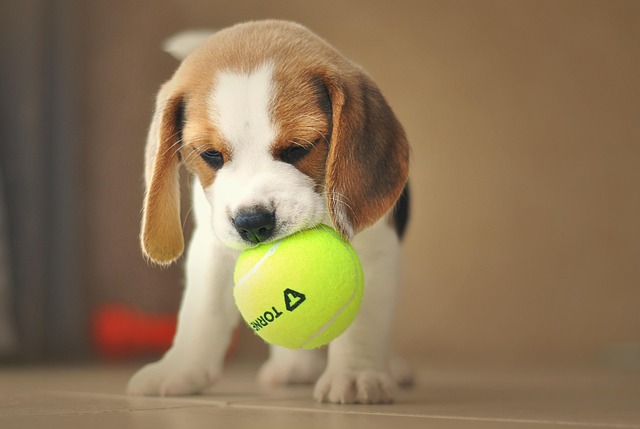
How can I tell if my dog's heatstroke is serious
Let’s be real: It’s a sticky August morning in Los Angeles, and you took your 2-year-old Golden Retriever, Max, for a walk a little later than usual
If you've ever gazed into the eyes of a puppy with those adorably floppy ears, you've probably wondered: will those velvety flaps ever stand at attention? It's a question as old as puppy love itself, and the answer isn't as straightforward as you might think. From the bustling dog parks where owners swap stories to the countless pet forums filled with hopeful queries, the mystery of ear development in puppies has captivated canine enthusiasts worldwide. Let’s peel back the layers and uncover the truth behind this charming canine trait.
Genetics play the starring role in the ear-raising drama. Just like how some of us inherit our grandmother’s green eyes or our father’s curly hair, a puppy’s ear shape is largely determined by its breed. Breeds like German Shepherds, Doberman Pinschers, and Corgis often sport upright ears as adults, thanks to genetic programming that triggers cartilage hardening and muscle development over time. On the flip side, Spaniels, Basset Hounds, and Beagles carry genes that keep their ears permanently floppy, creating that iconic look that melts hearts. But here’s where it gets tricky: mixed-breed puppies, those delightful genetic mosaics so common in shelters and rescues, can be wild cards. Their ear fate might combine traits from multiple breeds, leaving owners guessing until nature runs its course.
 While genes lay the foundation, health and environment can influence the outcome. A balanced diet rich in calcium, phosphorus, and vitamins is crucial for proper cartilage development. Think of it like building a house—weak materials lead to a shaky structure. Puppies lacking essential nutrients might experience delayed ear standing or even misshapen ears. In some regions, local animal welfare regulations emphasize responsible pet ownership, which includes providing adequate nutrition. Neglecting your puppy’s dietary needs not only impacts their ears but could also violate these codes, highlighting the importance of consulting your vet for breed-specific nutritional advice.
While genes lay the foundation, health and environment can influence the outcome. A balanced diet rich in calcium, phosphorus, and vitamins is crucial for proper cartilage development. Think of it like building a house—weak materials lead to a shaky structure. Puppies lacking essential nutrients might experience delayed ear standing or even misshapen ears. In some regions, local animal welfare regulations emphasize responsible pet ownership, which includes providing adequate nutrition. Neglecting your puppy’s dietary needs not only impacts their ears but could also violate these codes, highlighting the importance of consulting your vet for breed-specific nutritional advice.
Infections and injuries also pose risks. A simple ear scratch from rough play at the dog park or a bacterial infection from excessive moisture (common after swimming or frequent baths) can inflame the delicate ear tissues. These issues can disrupt the normal development process, causing ears to flop unevenly or stay down longer than expected. Many community dog spaces have strict rules about keeping sick pets at home to prevent the spread of infections, underscoring the need to monitor your puppy’s health closely.
Now, let’s address the elephant in the room: ear taping. Some owners, eager to see their puppy’s ears stand up, turn to DIY methods like taping or bracing. While this practice exists, it’s controversial. In many places, animal welfare laws prohibit any form of cosmetic alteration that could harm an animal, and improper taping can lead to skin irritation, restricted blood flow, or even permanent damage. Vets generally advise against home remedies, recommending patience instead. Remember, that dog park where everyone gathers to admire each other’s pups? It’s filled with dogs of all ear shapes and sizes, celebrating the natural beauty of every canine.
The waiting game is part of the charm. Puppies usually start showing signs of ear changes between 4 to 8 weeks old, but the process can take up to 6 months or longer. Some ears might stand up overnight, while others go through an adorable “one-up, one-down” phase. Embrace these quirks—they’re a reminder that each puppy is unique. And if, after months of anticipation, your pup’s ears remain floppy, cherish them. Those soft, velvety appendages are just as much a part of your dog’s personality as their wagging tail or soulful eyes. In the end, the true measure of a great dog has nothing to do with how their ears look, but everything to do with the love they bring into our lives.

Let’s be real: It’s a sticky August morning in Los Angeles, and you took your 2-year-old Golden Retriever, Max, for a walk a little later than usual

You're enjoying a summer afternoon at the park when you notice your dog has stopped panting and appears disoriented - their gums are bright red

Let’s paint the picture: You’re in your Denver apartment, watching your 4-year-old Boston Terrier, Ruby, plop down mid-play session with her favorite toy

Many dog owners notice their pets nails seem shorter after regular walks,but how much does this daily activity actually help?The answer depends on where you walk—concrete sidewalks or asphalt streets gently file nails as a dog's paws hit the ground

Most dog owners notice their pup scooting across the carpet at some point, but few connect it to impacted anal glands. These small sacs near a dog’s rectum secrete a scent for marking territory

Most vets agree that regular dog teeth cleaning is key to avoiding painful dental issues later. For healthy adult dogs, a professional cleaning at the vet’s office every 12 to 18 months usually works well.